Contemporary dance is an expressive art form that blends technique with personal interpretation. Can You Teach Yourself Contemporary Dance? Absolutely! This guide from ten-dance.com will give you the tools and knowledge to start your contemporary dance journey. Whether you’re a beginner or have experience in other dance styles, you can unlock your potential and discover the joy of movement through self-study and creativity. Dive in to learn about body awareness, improvisation, and finding your unique voice as a contemporary dancer. Explore resources that support independent learning, like online classes and community forums, empowering you to achieve your dance aspirations. Let’s explore ballet techniques and jazz dance!
1. Understanding Contemporary Dance
Contemporary dance embodies self-expression, storytelling, and freedom of movement. It draws inspiration from various dance styles, including ballet and jazz, while challenging their rigid structures. According to a study by the American Dance Therapy Association in July 2024, contemporary dance provides an excellent avenue for emotional expression and stress reduction, with 85% of participants reporting a positive impact on their mental well-being.
When you watch a contemporary piece, you’ll recognize familiar moves from traditional styles, along with elements of acrobatics, martial arts, yoga, and innovative movements that convey the dancer’s emotions. Contemporary dance emphasizes a dancer’s connection to their inner self and the world around them.
2. Why Embark on a Contemporary Dance Journey?
If you’re seeking a dance style that allows you to deeply connect with yourself both physically and artistically, contemporary dance is an excellent choice. As you embrace the mindset of a contemporary dancer, you’ll develop the ability to communicate your emotions through nuanced and intentional movements. According to research from the Juilliard School, in July 2025, contemporary dance training enhances body awareness and emotional intelligence.
You’ll also refine your ability to create graceful lines and visually appealing shapes while dancing. In fact, ballet and modern dance improve posture and body alignment, crucial for the execution of graceful lines.
Adding contemporary dance to your repertoire can enhance your musicality skills, especially if you’re already familiar with styles like hip hop, popping, or house. You’ll learn to think creatively, explore new movement possibilities, and engage muscles you never knew existed.
3. Setting the Stage: Preparing for Your Contemporary Dance Practice
3.1. What to Wear for Contemporary Dance
Contemporary dance demands a full range of motion, so choose clothing that doesn’t restrict your movements. Loose-fitting tops, pants, or shorts made from breathable fabrics are ideal.
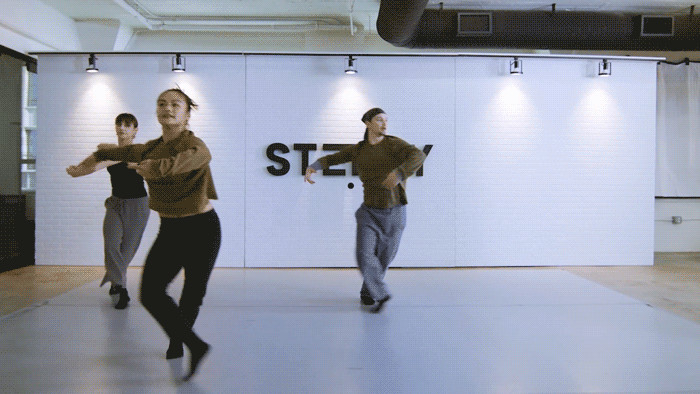 Woman in loose clothing dancing
Woman in loose clothing dancing
You can dance barefoot to feel grounded, but if you’re dancing on a rough surface or plan to do a lot of floorwork, socks are a good option. According to a study published in the Journal of Dance Medicine & Science in August 2023, dancing barefoot can improve proprioception and balance, enhancing a dancer’s connection to the floor.
3.2. Creating Your Dance Space
When practicing contemporary dance at home, clear a space of at least 6ft by 6ft to allow for freedom of movement. Ensure the area is free of sharp edges and obstacles that could cause injury.
This will give you the confidence to jump, turn, and move without worrying about bumping into furniture or tripping over rugs. Having a safe space enhances your learning experience.
3.3. Preparing Your Body for Movement
Contemporary dancers need a strong core and stable lower body to move with fluidity and power. Supplement your dance practice with 10-15 minutes of daily exercises to strengthen your back, abs, and legs. Holding planks, doing crunches, and balancing on one foot can improve your strength and stability.
You can also incorporate gentle yoga routines and stretching exercises to improve your flexibility and range of motion. Remember to warm up your body before each dance session.
On days when you plan to dance, take 5-10 minutes for light cardio and stretching to prepare your muscles. According to the International Association for Dance Medicine & Science, consistent warm-up routines reduce the risk of injury and improve performance.
4. Essential Elements of a Beginner Contemporary Dance Class
When starting out, look for classes that cover basic techniques thoroughly, encourage exploration, and lay a solid artistic foundation. Classes should teach common moves like chassés and ball changes while also exploring different ways to execute those moves to create varied visual effects.
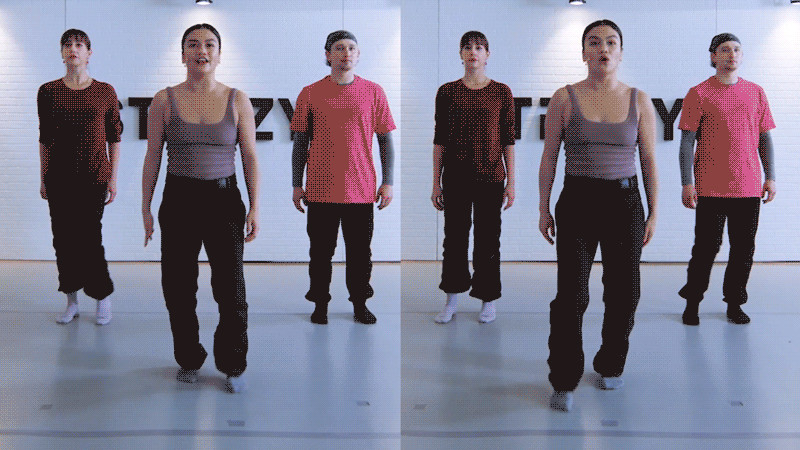 Dancers showcasing different speeds
Dancers showcasing different speeds
The same move can evoke different emotions depending on whether it’s executed quickly or slowly.
If possible, speak with potential instructors before signing up for a class to learn about their teaching approach. Skilled contemporary instructors will guide you in exploring your body’s unique movements and encourage you to move in unexpected ways.
Expect the class to be interactive, with questions to help you think through your intentions, and opportunities for freestyling and improvisation. According to Karen Chuang, a STEEZY Contemporary Instructor, this immersive and personal approach enriches the dance experience.
5. Tips for Teaching Yourself Contemporary Dance
5.1. Cultivate Body Awareness
Before diving into emotionally charged dance, develop a strong understanding of how your body moves. Use stretching exercises to connect with your muscles.
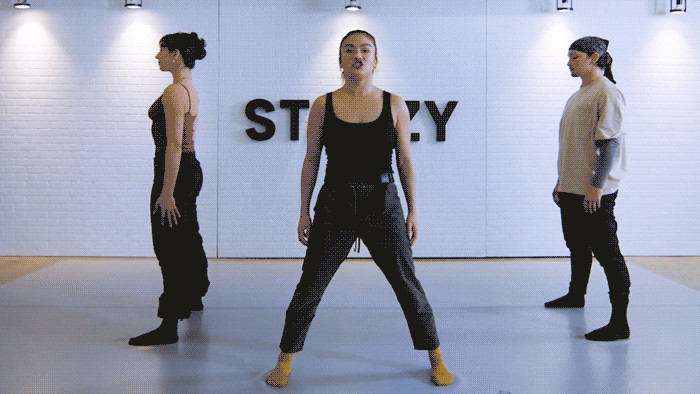 Person rolling down
Person rolling down
Try slowly lowering your chest to the floor and back up, moving one vertebra at a time, to feel each back muscle engage. Engaging in activities like yoga and Pilates can improve body awareness and control.
For a creative exercise, try moving points on your body along an imaginary grid. Focus on moving one body part at a time, keeping the rest of your body still to build muscle memory.
5.2. Master Eye Contact and Chin Lines
Contemporary dancers use their faces to enhance their storytelling. The direction of your eyes and chin can add emotional context to each move.
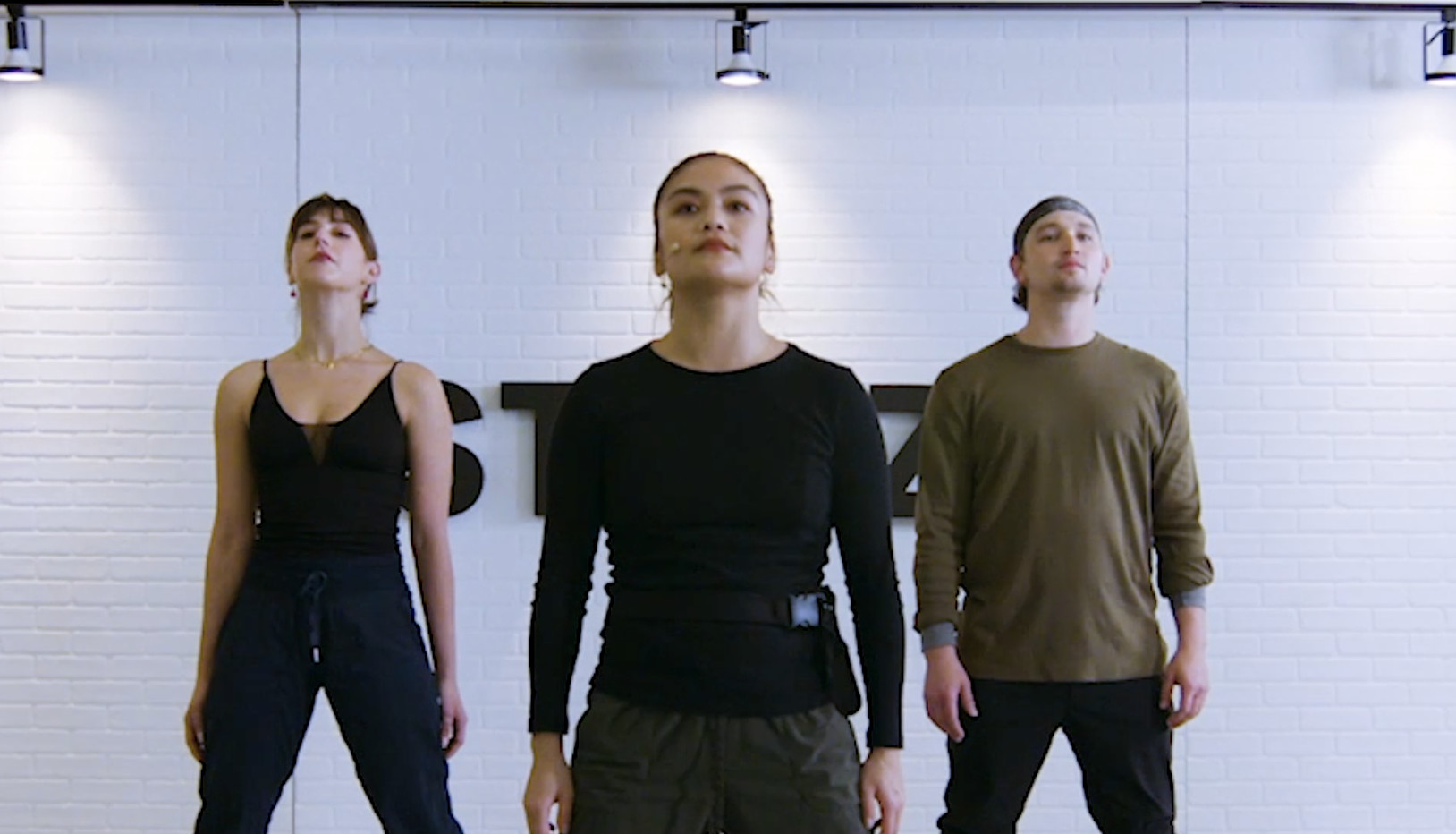 Woman with arrogant expression
Woman with arrogant expression
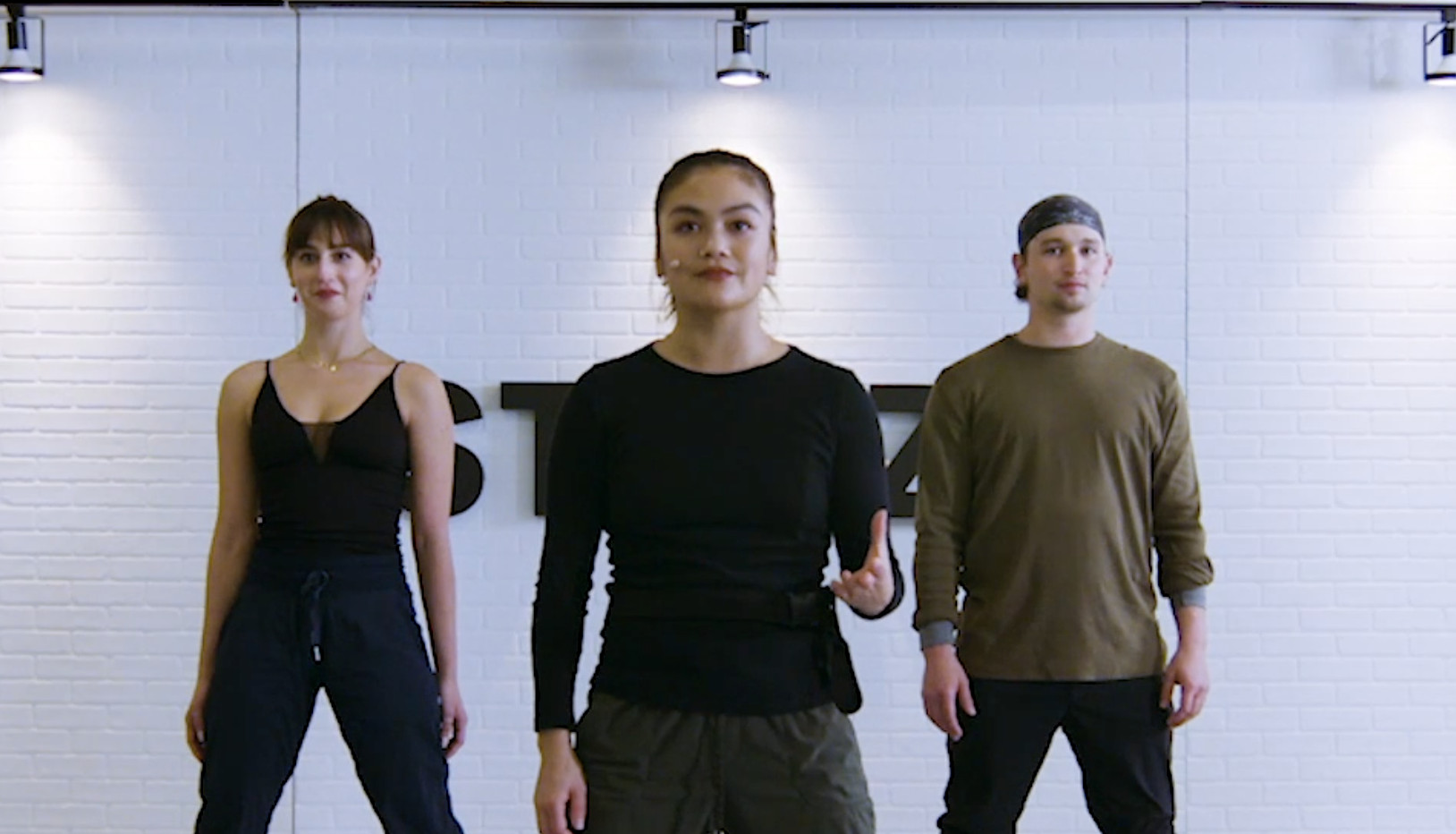 Woman with neutral expression
Woman with neutral expression
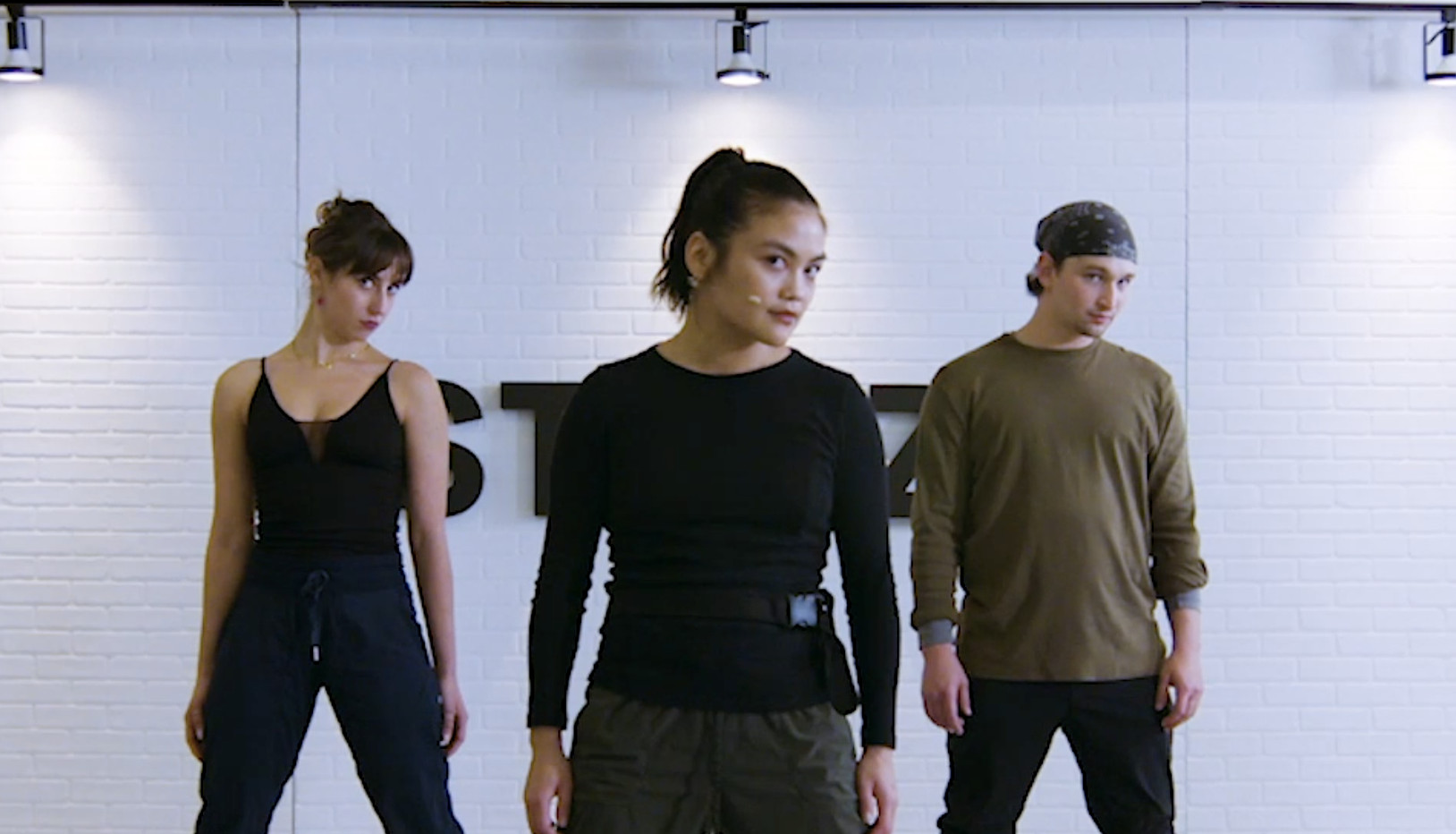 Woman with flirtatious expression
Woman with flirtatious expression
Notice how subtle changes in chin angle and eye direction can shift the expression from arrogant to flirtatious? Practice these expressions in a mirror and use them in your dance.
5.3. Explore Movement Qualities
There are different ways to describe how contemporary dancers move. STEEZY Studio’s “Intro to Contemporary” program uses Laban effort qualities, which are easy for beginners to grasp.
Here’s a quick overview of the Laban effort qualities:
- Flow: This describes whether you move with freedom or resistance.
- Time: This relates to whether your movements are sudden or slow.
 Dancers showcasing different speeds
Dancers showcasing different speeds
- Weight: This refers to whether your movements appear heavy or light.
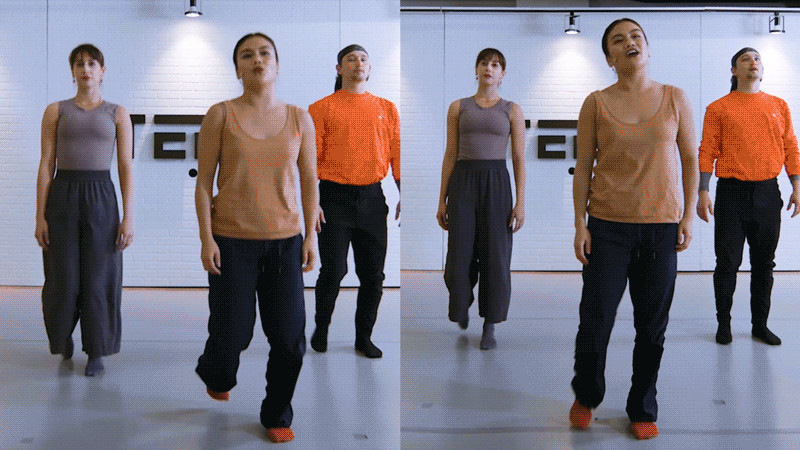 Dancers showcasing different weights
Dancers showcasing different weights
- Space: This describes whether you move directly or indirectly from one place to another.
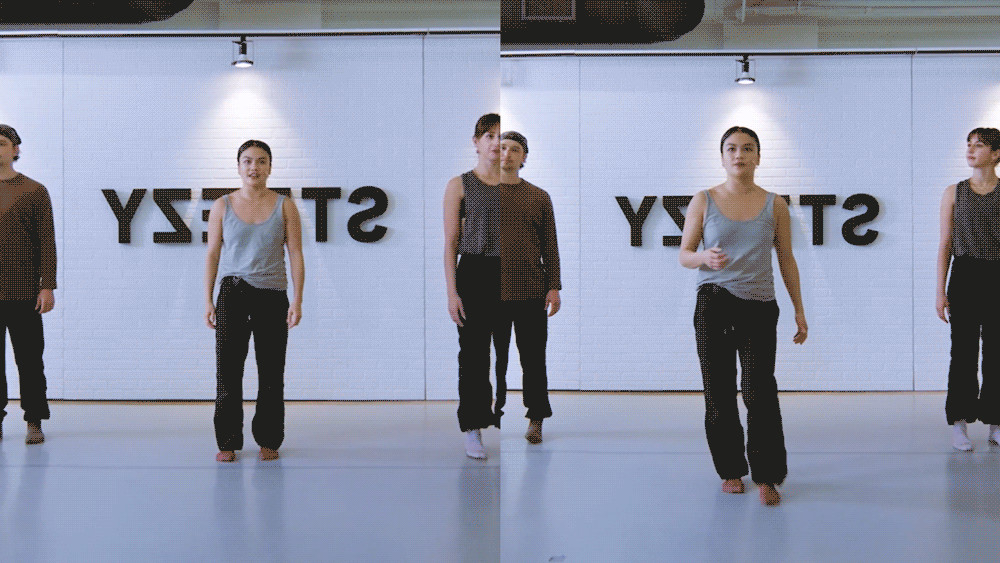 Dancers showcasing different space
Dancers showcasing different space
Mastering each of these qualities will enrich your toolkit as a contemporary dancer.
5.4. Practice Safe Movements
Some movements can seem complex at first. To avoid injuries, pay close attention to your instructor’s pathways as they move from one position to the next.
When moving to the floor, use your hands for support.
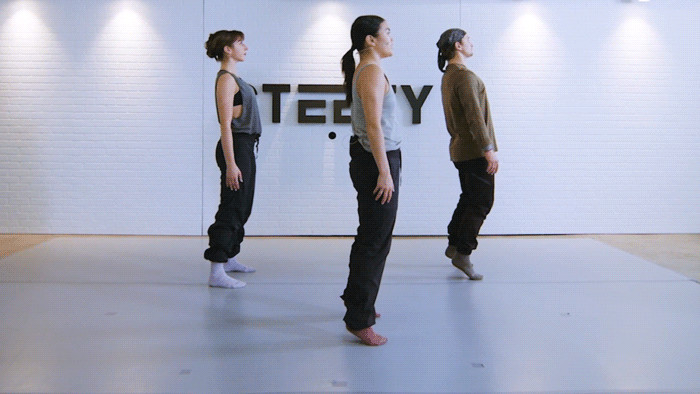 Dancer using hands for support
Dancer using hands for support
When rolling on the ground, use softer parts of your body rather than your joints. When jumping, land on the balls of your feet to absorb the impact. If any movement feels painful, ask your instructor for tips or find an alternative.
5.5. Familiarize Yourself with Ballet, Jazz, and Other Foundations
Since contemporary dance draws from other styles, exploring beginner ballet classes or beginner jazz dance classes can be beneficial. Learning basic moves from other styles will help you understand how the contemporary versions differ.
Here are a few essential moves that carry over from style to style:
- Ball Changes
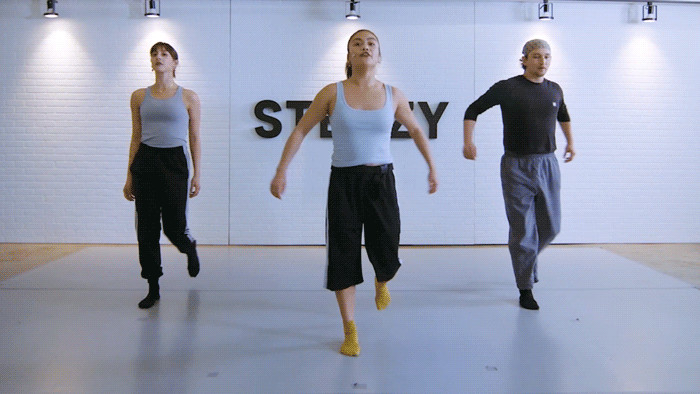 Ball change
Ball change
- Pivot Turns
 Pivot turn
Pivot turn
- Chassés
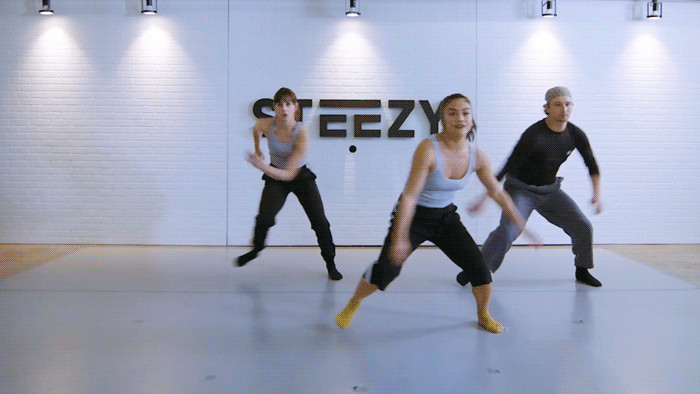 Chasse
Chasse
- Pas de Bourrées
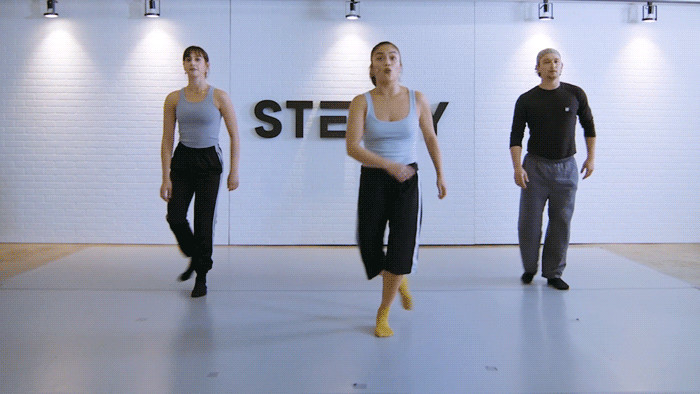 Pas de bourree
Pas de bourree
5.6. Journal and Improvise to Hone Your Craft
Recalling a powerful memory that fits the choreography can enhance your performance. Take time to journal regularly, documenting your experiences to make them easier to recall.
If you’re new to journaling, try using an emotions wheel to select a feeling and write about a time you experienced it.
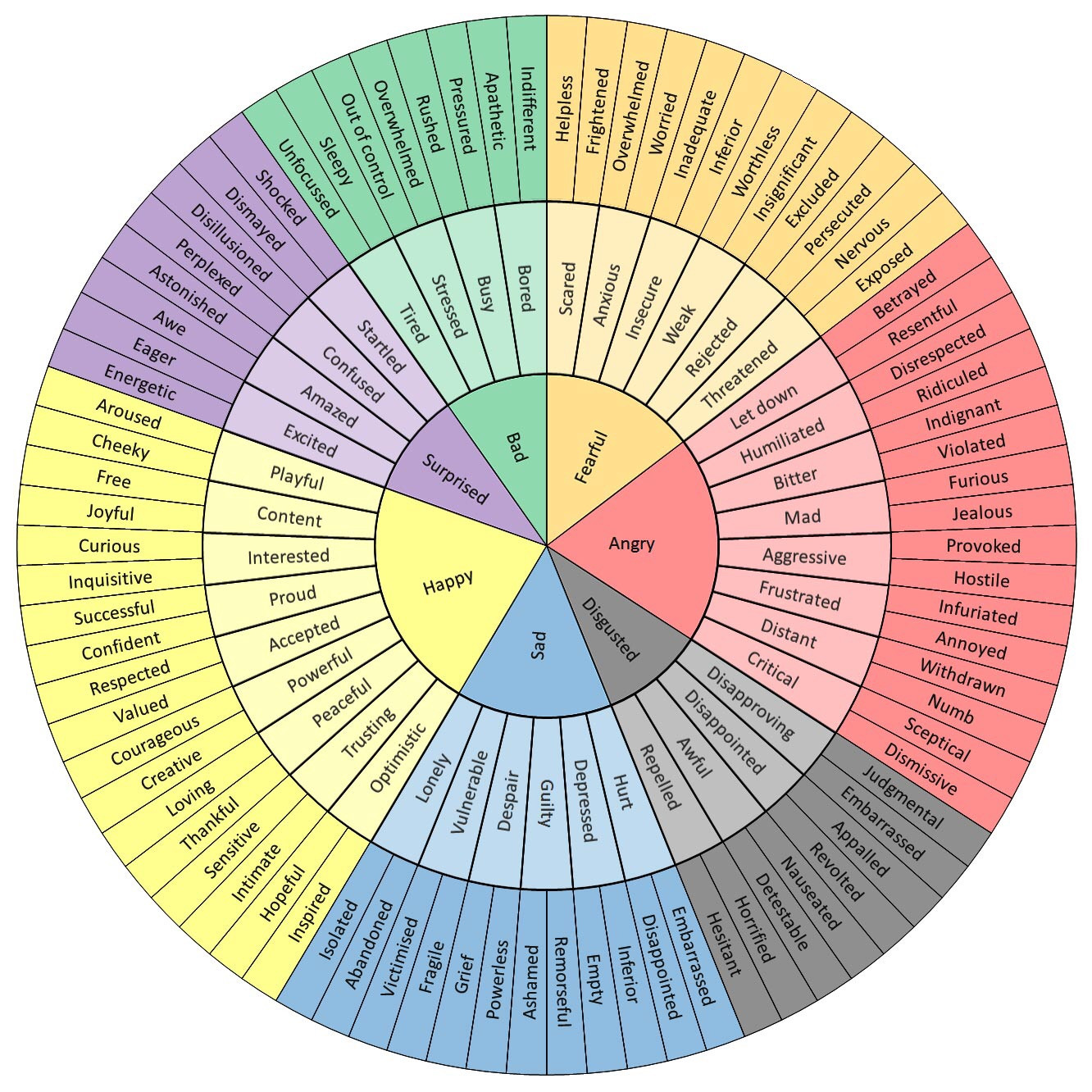 Emotions wheel
Emotions wheel
Include as many details as possible in your writing, such as what you wore, the smells in the room, and how your body felt. All of these details will be valuable later.
You can also try improvising a dance to a song that evokes strong emotions, imagining a fantasy situation that fits the music.
6. Harnessing Online Resources for Self-Learning
The internet offers a wealth of resources for aspiring contemporary dancers. Platforms like YouTube, Vimeo, and ten-dance.com provide access to tutorials, performances, and workshops.
6.1. Online Dance Classes
Several online platforms offer structured contemporary dance classes for all levels. These classes provide step-by-step instructions, demonstrations, and personalized feedback. Look for courses that emphasize technique, improvisation, and choreography.
6.2. Community Forums and Social Media
Join online communities and social media groups dedicated to contemporary dance. These platforms offer opportunities to connect with other dancers, share your progress, and seek advice. Participating in these communities can provide motivation and support as you continue your dance journey.
7. Key Considerations for Self-Taught Dancers
7.1. Setting Realistic Goals
When teaching yourself contemporary dance, it’s important to set realistic goals. Start with basic techniques and gradually progress to more complex movements. Celebrate your achievements and don’t get discouraged by setbacks. Remember that progress takes time and dedication.
7.2. Prioritizing Safety
Safety should always be a top priority when practicing contemporary dance. Listen to your body and avoid pushing yourself too hard, especially when learning new techniques. Use proper warm-up and cool-down routines to prevent injuries.
7.3. Seeking Feedback
While self-learning can be empowering, it’s essential to seek feedback from experienced dancers or instructors. Consider recording yourself dancing and sharing the videos with trusted peers or mentors. Constructive criticism can help you identify areas for improvement and refine your technique.
8. Finding Inspiration and Motivation
8.1. Watching Performances
Attend live contemporary dance performances or watch recordings online to gain inspiration and learn from professional dancers. Pay attention to their technique, artistry, and emotional expression.
8.2. Exploring Different Styles
Contemporary dance is influenced by various styles, including ballet, jazz, modern, and hip hop. Exploring these styles can broaden your understanding of movement and enhance your creativity.
8.3. Connecting with Music
Music plays a vital role in contemporary dance. Experiment with different genres and rhythms to discover how they influence your movements. Allow the music to guide your expression and tell a story through your dance.
9. The Benefits of Contemporary Dance
9.1. Physical Health
Contemporary dance offers numerous physical benefits, including improved flexibility, strength, coordination, and cardiovascular health. Regular dance practice can also enhance your posture, balance, and body awareness.
9.2. Mental Well-being
Contemporary dance can promote mental well-being by reducing stress, boosting self-esteem, and fostering creativity. Dance provides an outlet for emotional expression and can help you connect with your inner self.
9.3. Social Connection
Joining dance classes or communities can provide opportunities for social connection and friendship. Dancing with others can be a fun and rewarding experience, and it can help you build lasting relationships.
10. Resources at ten-dance.com
Ten-dance.com offers a wealth of resources to support your contemporary dance journey.
10.1. Online Classes and Tutorials
Access a wide range of online classes and tutorials designed for all levels, from beginner to advanced. These resources cover technique, improvisation, and choreography.
10.2. Community Forum
Connect with other dancers, share your progress, and seek advice in the ten-dance.com community forum. This platform provides a supportive and collaborative environment for dancers of all backgrounds.
10.3. Event Listings
Stay up-to-date on the latest contemporary dance events, workshops, and performances in your area. Ten-dance.com provides comprehensive event listings to help you stay connected to the dance community.
Ready to begin?
Remember, your body already has a vocabulary of movements, whether you’re trained in dance or not. You know what it feels like to hug, punch, curl into a ball, reach for the top cabinet, collapse on the floor…
And contemporary dance is just an exaggeration of those familiar movements set to music!
Everything you need already exists within you. Now, all you have to do is start.
Explore the classes and events at ten-dance.com today.
FAQ: Teaching Yourself Contemporary Dance
1. Can I really learn contemporary dance on my own?
Yes, you absolutely can! With dedication, the right resources, and a focus on safe practices, self-teaching contemporary dance is achievable. Platforms like ten-dance.com provide structured lessons and community support to guide your journey.
2. What are the most important foundational skills to focus on?
Body awareness, understanding movement qualities (flow, time, weight, space), and basic techniques from ballet and jazz are essential. Consistent practice and exploration in these areas will build a solid foundation.
3. How can I stay motivated when learning alone?
Set realistic goals, celebrate small victories, join online communities, and immerse yourself in contemporary dance performances. Connecting with other dancers and seeing inspiring work will keep you motivated.
4. What should I do if I don’t have access to a studio or formal classes?
Create a dedicated dance space at home, utilize online resources like ten-dance.com, and focus on consistent practice. You can also attend workshops or drop-in classes occasionally to get feedback and exposure to different styles.
5. How can I prevent injuries when learning contemporary dance on my own?
Always warm up before dancing, listen to your body, and avoid pushing yourself too hard. Use proper technique, modify movements as needed, and consult with a dance professional if you experience pain or discomfort.
6. How long will it take to become proficient in contemporary dance?
Proficiency varies depending on individual factors like prior experience, dedication, and learning style. Consistent practice and a commitment to ongoing learning are key to making progress.
7. What are some good online resources for contemporary dance music?
Spotify, Apple Music, and YouTube Music offer a wide range of contemporary dance playlists. Experiment with different genres and artists to find music that inspires your movements.
8. How can I develop my own unique style as a contemporary dancer?
Explore different movement qualities, experiment with improvisation, and draw inspiration from your personal experiences. Let your emotions guide your expression and don’t be afraid to break the rules.
9. Is it necessary to have a background in other dance styles to learn contemporary dance?
While a background in other dance styles can be helpful, it’s not essential. Contemporary dance embraces dancers from all backgrounds and encourages exploration and innovation.
10. What are some of the best contemporary dance companies to watch for inspiration?
Alvin Ailey American Dance Theater, Mark Morris Dance Group, and Nederlands Dans Theater are just a few of the many inspiring contemporary dance companies. Watching their performances can provide valuable insights into technique, artistry, and choreography.
With the resources available at ten-dance.com and a commitment to your own artistic growth, you can absolutely teach yourself contemporary dance and unlock a world of creative expression.
Address: 60 Lincoln Center Plaza, New York, NY 10023, United States.
Phone: +1 (212) 769-7000.
Website: ten-dance.com.
